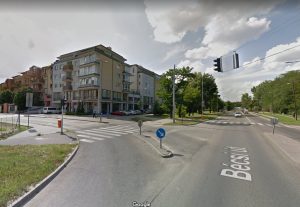The Roman predecessor of Route 10
In Óbuda we can come across Roman remains or modern structures hiding them if we take a quick look every now and again to the right or the left. Let’s continue now with the Roman predecessor of modern-day Route 10.
But first the history!
The area in question lay around the ancient road, the so-called Via Diagonalis (leading northwest from the Aquincum settlements towards ancient Brigetio, modern-day Komárom-Szőny). This was the predecessor of the modern Route 10, which follows almost the exact same path. Dotting the road were villa estates roughly every half kilometre, forming a dense suburban belt at the edge of Aquincum.
What can we see today?
Unfortunately none of this is visible. There is a modern road on top of the ancient route and the site of the villas were built up, but in several places where the modern road diverges from the old path, archaeologists were able to excavate. For instance in the 1930 at the cemetery (when there were still large, unoccupied tracts) they found a section of the ancient road. Towards the north (underneath the former Russian barracks and the current housing estate), too, they found further stretches of the road – nearly 7 metres wide. The road had many layers – the earliest from the reign of Hadrian (though there had been an unpaved road even before) and the latest from the 18th century. Fortunately coins and other small, everyday items lost by their owners along the road could help archaeologists date the individual layers. The 19th century saw the discovery of a 20 m-long and 8 m-wide stretch of the road – to the south, by the gates of the cemetery, on the other side of Pomázi Road – including several milestones in their original position. The stones marked the 2 Roman miles from ‘kilometre zero’ i.e. the centre of the legionary fortress in Aquincum (present-day Flórián Square). They were placed in the same spot, but under different emperors. The latest dates from the year 254.
The modern-day Route 10 (Bécsi Road) therefore follows the path of the ancient road – with some divergence – through the Solymárvölgy towards the northwest.
Soon we’ll continue our search for Roman remains as there are still plenty of other hidden and conspicuous monuments to discover in Óbuda beyond the legionary fortress, the Military Town and the Civil Town; but more on those later.
Image from: Google Street View
Written by: Dr Orsolya Láng
Edited by: Dániel Kővágó



